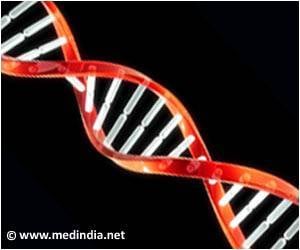Discovery may lead to insights into improving muscle regeneration and cancer treatment.

‘Long non-coding RNAs appear to be transcribed from our DNA in a similar manner to coding messenger RNAs but are not translated into proteins.’





Long non-coding RNAs appear to be transcribed from our DNA in a similar manner to coding messenger RNAs but are not translated into proteins. While lncRNA molecules do not produce correspondingly lengthy proteins, researchers have wondered whether some of these molecules may contain segments of sequences that can code for very short proteins, or polypeptides. "Whether such small, hidden polypeptides are actually functional, or represent 'translational noise' within the cell is still relatively unclear," said senior author Pier Paolo Pandolfi, MD, PhD, Director of the Cancer Center and Cancer Research Institute at BIDMC. "Our team set about trying to understand to what extent lncRNA molecules might actually encode functional polypeptides, and how important such peptides might be."
The investigators used computational analyses to predict potential polypeptides that could be encoded by known lncRNA molecules, and then they used mass spectrometry to determine if these putative polypeptides were actually expressed. "With this approach we actually identified many expressed hidden polypeptides and went on to characterize one in particular," Pandolfi explained. This specific lncRNA molecule is termed LINC00961 and encodes a 90 amino acid polypeptide.
A variety of molecular and biochemical experiments revealed that the LINC00961 encoded polypeptide played an important role in modulating the activity of the mTORC1 protein complex, which is a critical sensor of nutrient availability within cells. The complex also regulates a variety of cellular processes including translation, metabolism, cell growth, and proliferation, and alterations in its function can lead to diseases such as cancer. Because the LINC00961 polypeptide appeared to specifically block mTORC1's ability to sense stimulation with amino acids, the investigators named the peptide encoded by the lncRNA SPAR (Small regulatory Polypeptide of Amino acid Response).
Pandolfi and his team found that the SPAR encoding lncRNA is highly expressed in a number of tissue types, including muscle. Experiments conducted in mice demonstrated that through its effects on mTORC1, the SPAR polypeptide helps regulate the muscle's ability to regenerate and repair after injury. Specifically, expression of LINC00961 is blocked following muscle injury in mice, leading to reduced levels of SPAR and maximal mTORC1 activity to promote tissue regeneration.
Advertisement
The results suggest that lncRNAs may have diverse roles and functions. Although they may not code for large proteins, lncRNAs may produce small polypeptides that can fine tune the activity of critical cellular components. The findings also expand the repertoire of peptide-coding genes in the human genome that should be studied and annotated.
Advertisement
Because the mTORC1 complex is frequently deregulated in conditions such as cancer, the research team is now seeking to determine if SPAR can influence additional cellular functions of mTORC1 that might be involved in different diseases. "We are very excited about this discovery," said Pandolfi. "It represents a new and startling mechanism by which important sensory pathways can be regulated within cells, and we believe it will have important implications for how we approach the design of therapies and treatments in the future."
Source-Eurekalert









